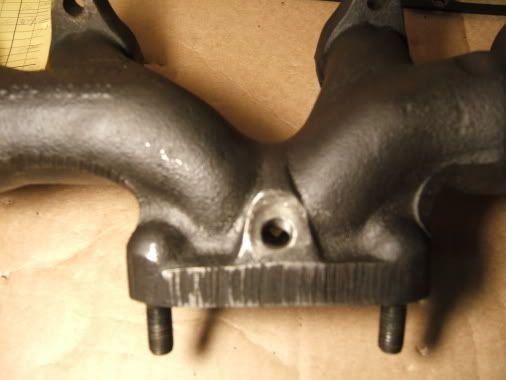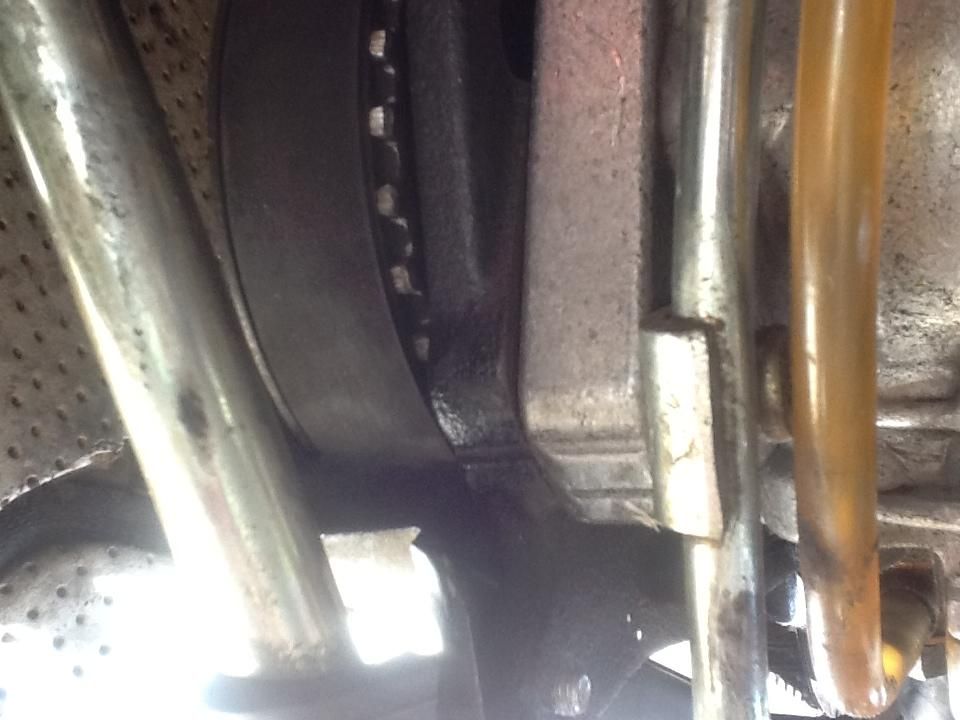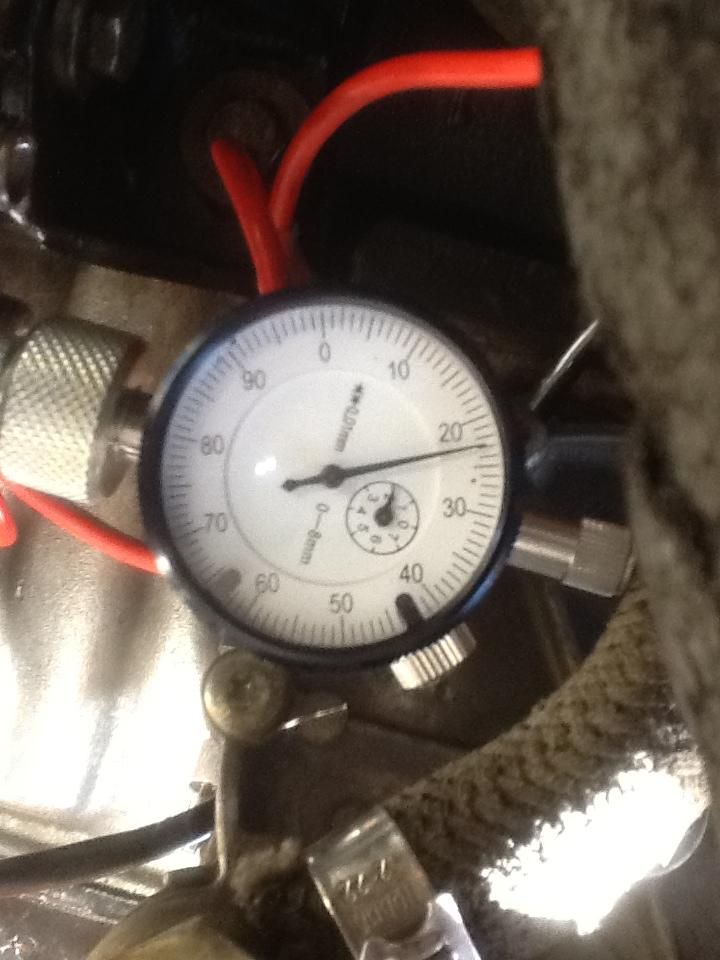
 |
|
|
|
#1
|
|||
|
|||
|
Hi all,
I recently bought a 1987 Pinzgauer 718, pictures are in my profile. It is one of 15 that were used by Delta Force is Desert Storm. All the gun mounts are cut off. Also, I am in Denver (5280ft.) and routinely drive it up to 11k feet. I bought it from a dealer that serviced it after sitting for a number of years and use of high sulfur diesel. The VE pump was rebuilt and all hoses that carried diesel were replaced. I have several manuals on the VE pump and guides from various places on how to affect each adjustment. When the main fuel screw is adjusted for setting the baseline fuel there are three three responses: 1) no smoke, low idle, no throttle response. 2) a small band of tons of power and quick throttle response, but lots of smoke. 3) Too much fuel to run smoothly. I have played with the LDA, and it works fine. I have the pin rotated to minimum fuel, the top screw is all the way up. But, I am at the stage of not getting to boost tuning yet. Seems I should have the baseline fuel sorted first...so I disconnect the LDA and plug the manifold. At altitude or coasting down from the mountains the engine blows a lot of white smoke and the engine temp drops to the minimum on the gauge. I have a hot thermostat in there. Also, I removed the cold start device and put a cable in place so I could manually tweak the timing...this has helped when going to 11k feet. I also suspect it will be better to fit a higher A/R turbo (garrett T3/T4) once I get this sorted out. Is this behavior normal for the D24TIC? Am I really stuck at a very fine point of smoke/power trade off with the main fuel adjustment, where I can't get reasonable power and I still have smoke? BTW, I am not expecting the truck to move fast, it is 6,200 pounds empty and has six wheels, each with with a gear reduction. I would like to be able to get to 100 km/h within a 3 minutes and be able to drive it at altitude. Would pictures of the engine help at all? Cheers, rob. |
|
#2
|
|||
|
|||
|
Volvos made from late 1984 onward are fitted with a pressure-sensing switch connected to a solenoid valve on the injection pump that affects injection timing. Above about 3300' the switch trips and cuts power to the solenoid, putting it into high-altitude mode. The difference is audible. Maybe adding such a solenoid would be a good option for your truck? Or, since you probably rarely if ever descend below 5000' you could also simply adjust base static timing so that it is tuned for high altitude at all times.
The behavior you're describing is normal for a D24T/IC to some extent especially at high altitude, but the range of adjustment between having no power and having too much smoke should not be as narrow and sensitive as it sounds like it is on your rig. One thing to keep in mind is that it's necessary to run further advanced initial injection timing if turning up the fuel beyond a certain point. Playing with the fuel limiter screw (aka "smoke screw") adjusts injected quantity, but it does not affect start-of-injection timing. The injectors are not able to vary the *rate* at which they inject fuel, they can't give a bigger slug or a smaller slug depending on what the pump is sending them -- the only way they can inject greater quantities of fuel is just by being open for a longer duration of time. That means that if you turn the fuel up beyond a given point and haven't adjusted the pump timing accordingly, the injector essentially can "run out of time" to get all the fuel into the cylinder while conditions are suitable for burning it. In other words, you can be injecting a quantity of fuel that stoichiometrically speaking is appropriate for the amount of air entering the engine, but if you're not starting your injection events early enough, then by the time the injection event is finished it's spraying fuel into a cylinder that is already nearing (or even at) the end of the power stroke and that fuel is just leaving the engine as excess smoke rather than adding to the engine's output. This situation can also lead to extremely high EGT's so you need to be careful. By starting the injection event sooner -- within reason of course, it must not start *too* soon... -- you give the injection system an extra few degrees of crank rotation within which to accomplish the full fuel delivery, and you'll be able to turn the fuel up beyond the point where it smoked before and have that extra fuel now be used to make additional power instead.  Given the amount of load and driving conditions you're talking about subjecting this engine to, getting a pyrometer installed as a first step so you can monitor EGT's while you're working on tuning it would be a good way to make sure you don't accidentally damage the thing. Next, you'll want to know where your static timing is set. Do you have the measurement tools for checking pump timing? Getting that sorted is the critical first step. Engine compression and valve lift/timing also can have a significant effect on airflow and smoke, so if you are not 100% certain that the cam timing is correct and the valve clearances are in spec, if you want it to really run right you should plan to get baselines on all those things before you spend too much time tinkering with the fueling settings on the pump. I would suspect that a fairly aggressive timing setting of at least .95mm would be suitable in your situation, maybe even higher if you do a large proportion of your driving at altitudes even higher than 5280. If you check the pump timing and find you're down in the low .90's or .8x range somewhere, adjusting to .95-1.00 would probably help driveability significantly and allow you to burn more fuel and make more power without excessive smoke. That plus making sure the other engine parameters are in spec should give you a broader band of adjustment between making it too smoky or being a complete dog...
__________________
86 745 D24T/ZF 345k lifted 2.5" 83 764 D24T/M46 155k |
|
#3
|
|||
|
|||
|
Brilliant, makes sense, thank you.
I know it was timed at sea level when the rebuilt IP was installed. I will look for the timing tool and procedure. I was considering just manually rotating the pump, but that seems a bit reckless. If anyone can point me to a link/thread with the tool and procedure, that might speed things up for me. Also is there a place to attach a EGT on the exhaust manifold? I will look for that too, probably need to add a boost gauge too. Cheers, R. |
|
#4
|
|||
|
|||
|
Yeah, if it was timed at sea level and ran well down there, it probably would benefit from checking and resetting timing for higher altitude.
Agree that it's best to not just start moving the pump, it will help to check where it is set now beforehand to give yourself a baseline to start from, and you don't want to end up with it too far advanced either. There is timing info somewhere on here, and it should be made a sticky anyway -- you should be able to find several tutorials by searching, and if you see one you like you could post a link to it and we'll stick it to the top to make it easier for others to find next time.  Several people have put EGT probes in the exhaust manifold where all the runners come together just before the turbo -- maybe someone who has direct experience will speak up here.
__________________
86 745 D24T/ZF 345k lifted 2.5" 83 764 D24T/M46 155k |
|
#5
|
|||
|
|||
|
I have ordered up the Laser Tools 1870 timing kit:
http://www.lasertools.co.uk/item.aspx?item=549 I also found a decent video on the D24T/VE pump timing process: http://m.youtube.com/watch?v=FTXAm4P6nXU Last edited by Hecklebone; 01-06-2013 at 10:39 AM. |
|
#6
|
|||
|
|||
|
Another interesting (to me at least) note about timing. If using your manual advance lever does improve the way it runs, then that is probably a clue that a timing adjustment will help you get more out of the motor... remember that that manual timing adjustment only bumps the engine's base timing at the bottom of the RPM range, and by about 2500 RPM it is no longer having any effect at all. The advance lever works by rotating the roller cage inside the pump a certain distance to make the injection begin sooner, but its range of movement is much less than what the pump's pressure-controlled dynamic advance system accomplishes as RPM rises. Even at its furthest point the advance lever only can move the cage to about where it gets to anyway by ~2500 RPM thanks to the dynamic advance piston moving, and beyond that the pump just reverts to its normal advance curve with no further alteration regardless of the position of the manual advance lever. Of course, 2500 RPM is right around where the turbocharger begins making boost, so any improvement effect that can be achieved by using the advance lever is unfortunately limited to the part of the rev band where the engine is hardly to make any power anyway.
 The electric high-altitude advance solenoid used on the later-model Volvos has a slightly more thorough effect on timing, since it works by altering the pump's internal case pressure and thereby shifts the entire advance curve rather than just altering the bottom half of the curve like the mechanical advance lever does, but ultimately it too is limited in its effect because the total advance capability in the pump still tops out in the same place, determined by the end of the range of motion of the advance piston and roller cage. The only way of really shifting the entire timing curve one way or the other is by changing the pump's basic timing setting. Getting "reasonable power" while keeping smoke at a minimum should be an easily attainable goal once everything is in adjustment. It will probably never be a rocket but getting up to highway speed in under 3 minutes should not be a challenge at all even while hauling such a large and heavy van... a 3500lb Volvo can do it in less than 15 seconds without breathing too hard so I wouldn't think yours should take much more than a minute at the most. At least on flat ground... if you're merging onto a highway uphill at 8500' then my bets are off. 
__________________
86 745 D24T/ZF 345k lifted 2.5" 83 764 D24T/M46 155k |
|
#7
|
|||
|
|||
|
Quote:
Without boost enrichment, you will either have abysmal power , or blow black, just like if you had an NA pump. On the lean side of the boost pin, it will be the same, but less so. i'm on the most aggressive slope, with the spring soft, and it still barely smokes at sea level. Here is my EGT tap. If you have EGR, it will look different, you cold replace the EGR with a blanking plate, and tap that. 
|
|
#8
|
|||
|
|||
|
Awesome, thanks mate.
I will remove the turbo, drill out a hole and either tap it or weld on the EGT mounting nut. As i do this, i am wondering about a turbo upgrade. I think i have a .4 something AR on it now and was thinking of going to a .82. My VE pump is as lean as it can be now, i cannot help but think that a larger turbo will help, especially at altitude. Any thoughts on this? It will be a few weeks before i get the tool, gauges and get the work done. I will post when i do. Cheers! |
|
#9
|
|||
|
|||
|
Today I looked at the timing, and I am confused.
I followed the procedure in the green book: - align IP mark with belt and the fly wheel to zero.   - insert tool and put about 2mm of preload on it. - Rotate engine backward until minimum value on tool dial. - Zero tool. - Rotate engine forward to zero mark on fly wheel. - tool should now be reading about .80mm certainly between .70 mm to 1.00 mm. At this point my reading is .23 mm and I haven't unbolted the pump yet:  I went through the process several times, spun the engine forward one revolution in between. Then I tried loosening the pump to see if I could rotate it to a value of .80 mm or anywhere in the correct range. I could only increase the tool's value by .21 mm, which left me at .44 mm. This doesn't seem right. The only way I can get into the range of .7-1.0 is rotate the pump clockwise (from the tool port side). This also doesn't make sense to me since the book says the opposite. Any thoughts on what I am doing incorrectly? Cheers. Last edited by Hecklebone; 01-18-2013 at 10:31 PM. |
|
#10
|
|||
|
|||
|
I always adjust the timing by: having the pump in the full retard position (top of pump as far away from the head as possible) This leaves more room for injector or glow plug service. I loosen the rear cam sprocket and adjust timing by rotating it. (counterclockwise looking at the pulley)
Adjusting the timing by rotating the pulley is much easier then trying to rotate the pump. I always paint the notch on the pulleys white to easily see TDC on #1.
__________________
12mm pump heads, ARP stud kits and GTD nozzles available! http://d24t.com/showthread.php?t=1646 NA intake manifolds and 240 turbo pans for sale. Need d24 or d24t parts? PM me! Shipments done on fridays! 1982 242 D24+T/M46- Super pumped! Build thread: http://www.d24t.com/showthread.php?t=1545 1984 764 D24T/ZF build thread: http://www.d24t.com/showthread.php?t=1734 Diesel parts cars: 82 244,83 244, 84 244, 84 245, 85 745 |
 |
|
|